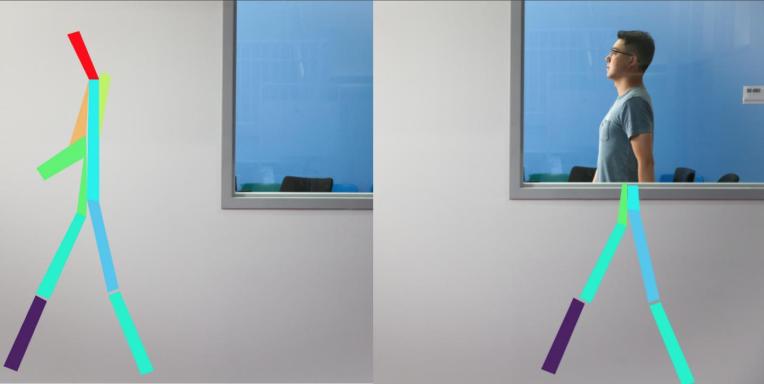MIT’s Computer Science and Artificial Intelligence Laboratory has created a system that can see your body through walls, recreating your poses when you walk, sit, or simply stand still. It uses RF waves to sense where you are and then recreates your body as a simple stick figure. It’s called RF-Pose.
From the release:
The researchers use a neural network to analyze radio signals that bounce off people’s bodies, and can then create a dynamic stick figure that walks, stops, sits and moves its limbs as the person performs those actions.
The team says that the system could be used to monitor diseases like Parkinson’s and multiple sclerosis (MS), providing a better understanding of disease progression and allowing doctors to adjust medications accordingly. It could also help elderly people live more independently, while providing the added security of monitoring for falls, injuries and changes in activity patterns.
The team is primarily interested in using this system for healthcare, allowing for passive monitoring of a subject inside a room without cameras or other intrusions. “All data the team collected has subjects’ consent and is anonymized and encrypted to protect user privacy,” wrote the researchers. “For future real-world applications, the team plans to implement a ‘consent mechanism’ in which the person who installs the device is cued to do a specific set of movements in order for it to begin to monitor the environment.”
The researchers trained the neural network by showing a machine a video of a person walking next to the RF interference they made as they moved. They then overlaid stick figures on the movement and trained the network to do the same automatically. Because RF signals are ubiquitous, it was easier to use than other sensing technologies.
Interestingly the researchers never trained the system to see through walls but it was able to “generalize its knowledge to be able to handle through-wall movement.”
“If you think of the computer vision system as the teacher, this is a truly fascinating example of the student outperforming the teacher,” said researcher Antonio Torralba. There is no word if the system will be used for other commercial purposes.
John Biggs
http://feedproxy.google.com/~r/TechCrunch/JohnBiggs/~3/ikg9LovRoBg/
Source link

